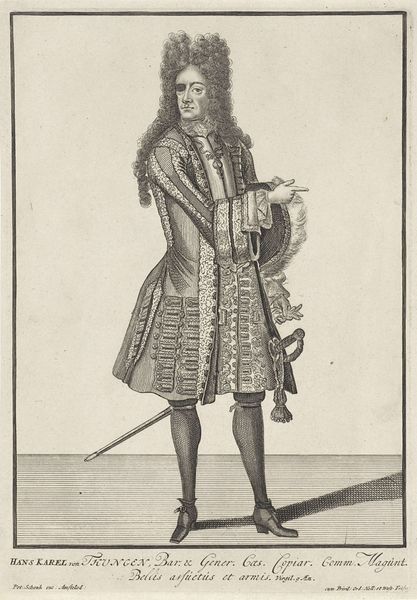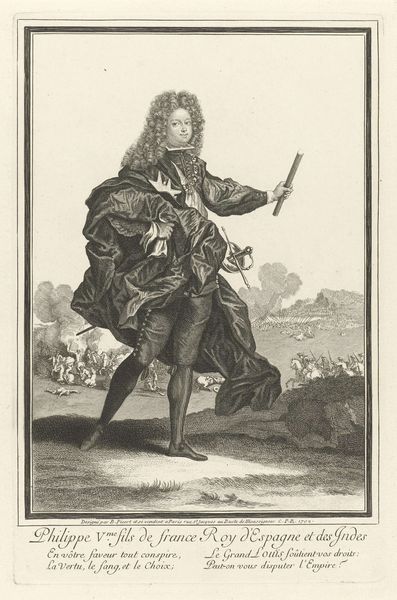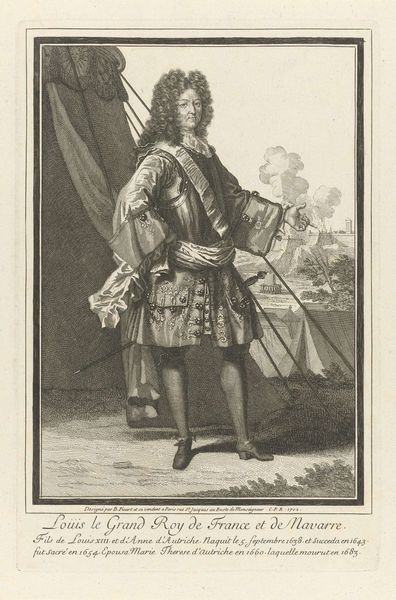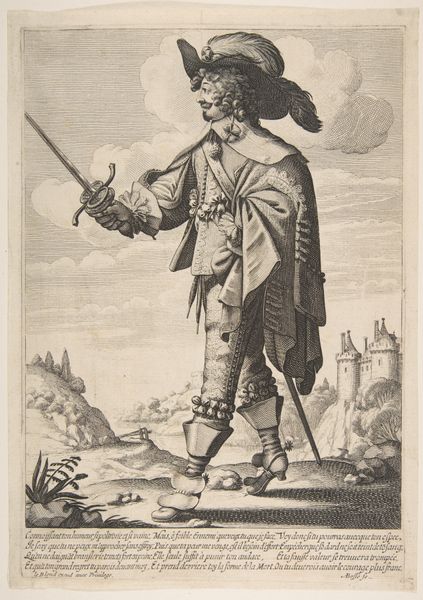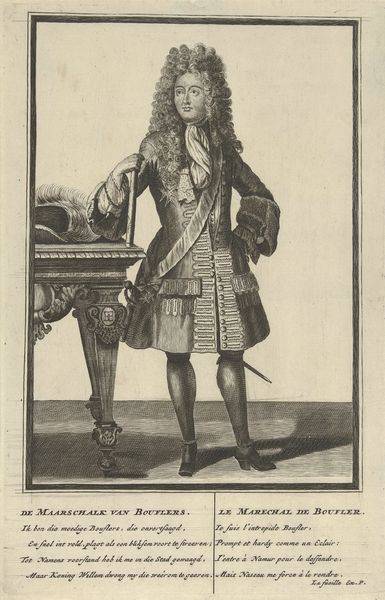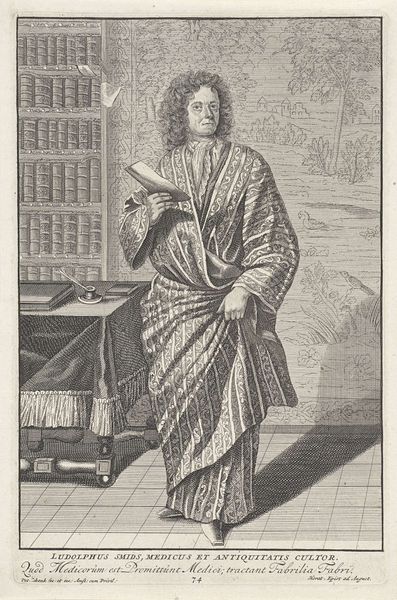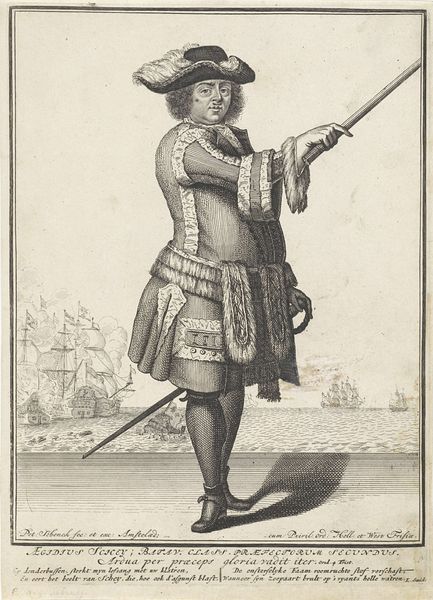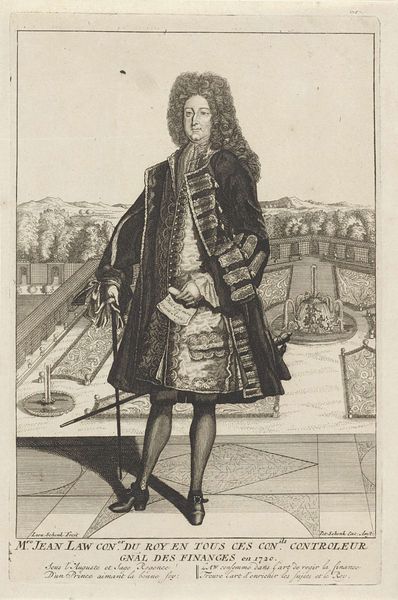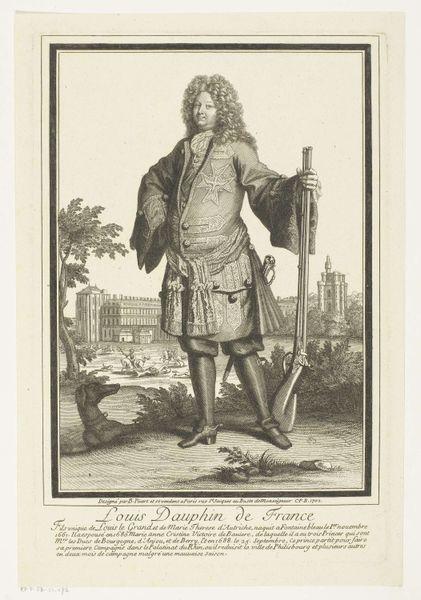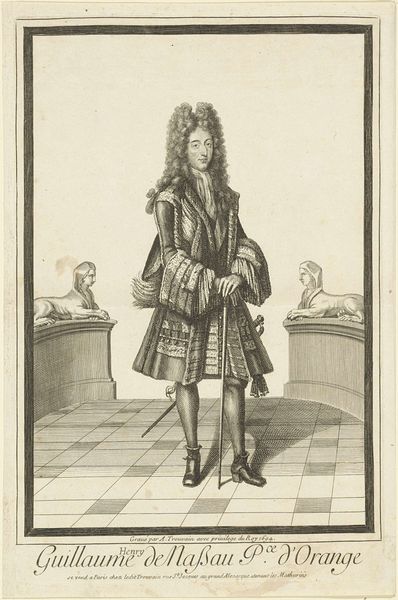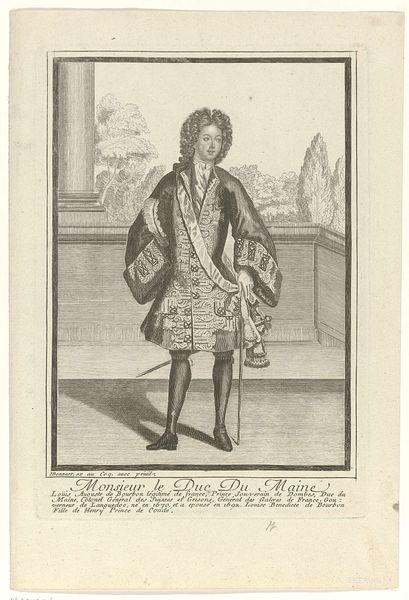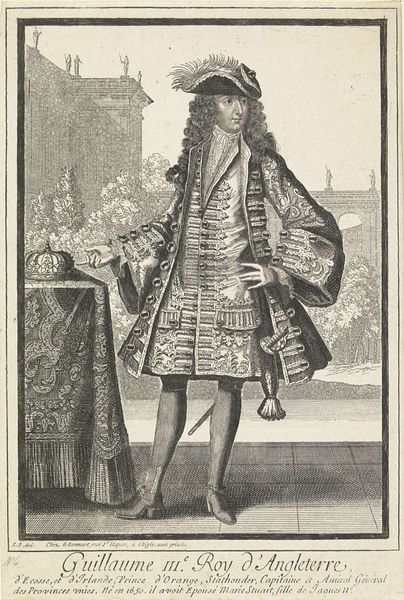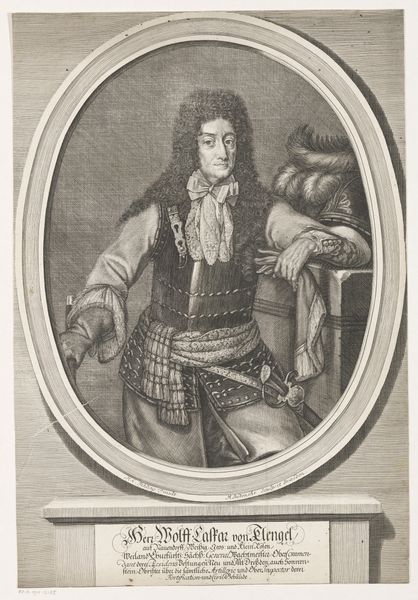
print, metal, engraving
#
portrait
#
baroque
# print
#
metal
#
old engraving style
#
history-painting
#
engraving
Dimensions: height 246 mm, width 179 mm
Copyright: Rijks Museum: Open Domain
Curator: This metal engraving is entitled "Portret van Willem III, prins van Oranje", which translates to Portrait of William III, Prince of Orange. It’s dated somewhere between 1688 and 1711, and is held here at the Rijksmuseum. Editor: It has a definite Baroque flourish, all right! Immediately, I'm struck by how William's personal adornment – that enormous wig, the intricately detailed clothing – clashes with the implied military scene. There’s something performative, even anxious, about it. Curator: The tension you're picking up on is quite deliberate. This was created and disseminated during a highly charged political period. William III, of course, became King of England, Scotland, and Ireland, jointly with his wife Mary. These images were crucial tools of image-making, shaping perceptions of his power. Editor: Absolutely. The composition reinforces that: we have the tent camp suggesting the military leader, but he is elevated and separated from that context, centered, his right hand assertively holding a baton. This isn’t just about military might; it’s about asserting divinely sanctioned rule, patriarchal authority and so on. Curator: The inclusion of the armor on a pedestal behind him speaks volumes too. It is symbolic of past glories and legitimacy, almost suggesting the weight of tradition that he is destined to carry and enhance. It invites critical exploration of power dynamics and constructions of masculinity during this era. Editor: Exactly, especially given that very specific configuration! It would be insightful to delve deeper into questions of visual rhetoric here, in light of the evolving dynamics in the relationship with Mary as the joint sovereign in question. What does this symbol mean, especially for future generation and viewers? Curator: Well, this image had enormous value in establishing the public's perspective on Willem’s reign, especially among factions that may have otherwise been resistant to Dutch authority. And your insights also help me consider the less-easily discussed negotiations of power in his marital relations. Editor: Precisely. Considering broader narratives invites us to interrogate, even destabilize, the dominant narratives often built up around these traditional representations of historical figures. Curator: Agreed. Now when viewers look at this print, they might consider the image itself as part of the arsenal wielded in solidifying a king's rule.
Comments
No comments
Be the first to comment and join the conversation on the ultimate creative platform.
